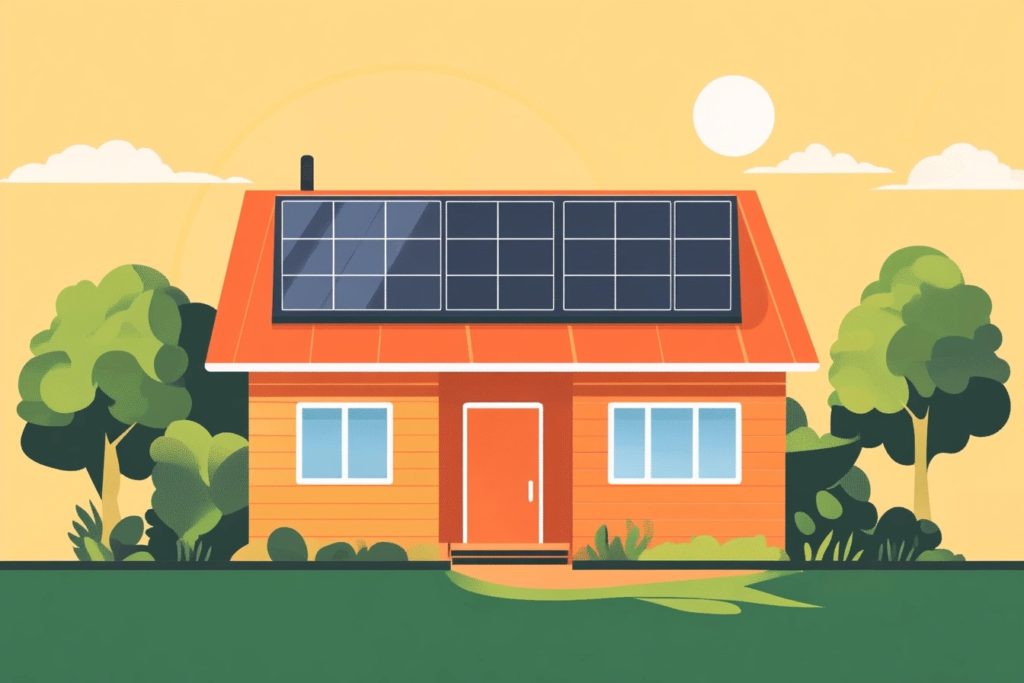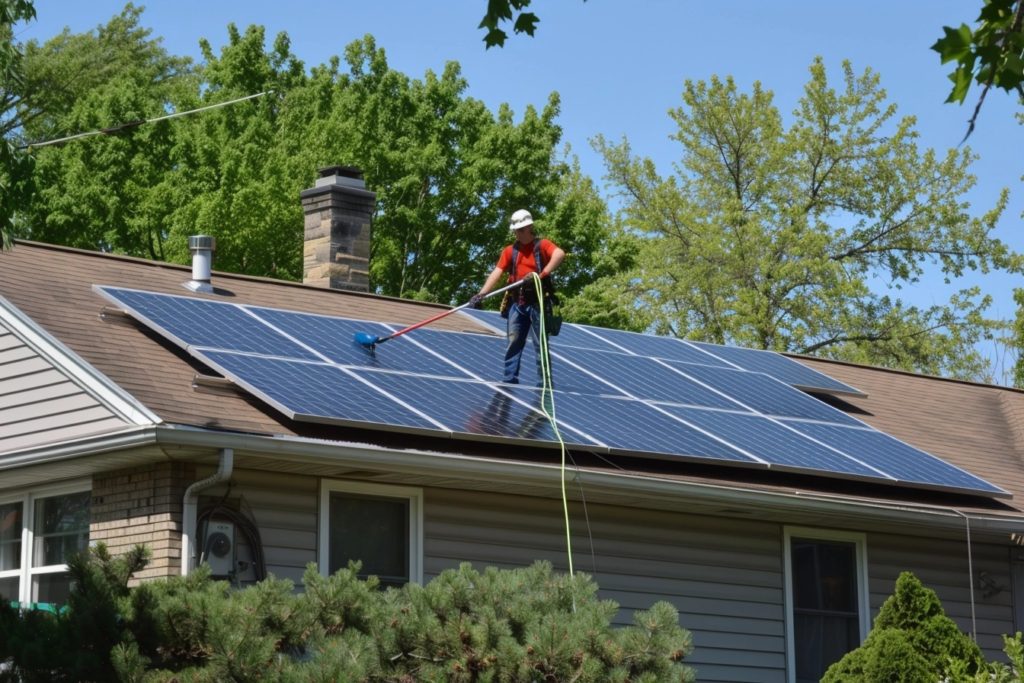
Making the decision to buy solar panels for your home is a smart choice for several reasons. Most importantly, a residential solar array can help you save money over buying energy from the utility company, and it’s also highly beneficial to our environment to replace fossil fuels with clean energy from the sun.
One of the most important questions we hear from people who are transitioning their homes to solar power is, “what is the best direction for solar panels?” Some people don’t have much of a choice, due to issues like rooftop slope, shading, and more. However, if your roof presents opportunities to aim your solar panels anywhere you want to, some options are certainly better than others. Let’s discuss the finer details of solar system installation and determine the best direction for solar panels to face on your roof.
What is the ideal installation angle and direction for solar panels?
For just about everyone living north of the equator, south-facing solar panels are the preferred option. While the sun’s angle does vary throughout different parts of each year, it always shines from the south in the Northern Hemisphere. The angle of installation matters too, as the ideal amount of tilt for a rooftop solar array is somewhere in the neighborhood of 35 degrees. As a general rule of thumb, people living near the equator should have a bit less of an angle, while people living further north may want to tilt their panels more.
Standard tier-based rate structure
Especially for customers of utility companies that operate on tiered rates, the best direction for solar panels to face will most likely be south. A tier-based rate structure results in customers paying higher prices as they use more energy from the utility. For instance, a company might charge five cents per kilowatt-hour for a customer’s first 500 kWh of the month, with prices escalating to ten cents per kWh for the next 500 kWh, and 15 cents for anything beyond that first 1,000 kWh.
Because this system determines pricing based on average usage, it doesn’t really matter what time of day you’re generating electricity with your solar panels, or when you might need additional energy from the grid. However, as we’ll discuss shortly, different rate structures present different challenges and preferences regarding the best direction for solar panels.
The benefits of a west-facing solar array
Interestingly, many people choose to install their residential solar panels facing west, despite the fact that for most households in the Northern Hemisphere, facing south is the best direction for solar panels. This is all based on a common rate structure used by utility companies known as “time-of-use.”
Time-of-use rate structure
Earlier, we discussed how a standard tier-based rate structure works. However, not all utilities use this format, as some instead opt for a time-of-use structure. Instead of using averages, a time-of-use structure focuses specifically on when you’re using energy from the grid, charging higher rates during peak periods. This system typically does not vary rates based on how much energy you use in a month.
We mentioned that a west-facing system may be the best direction for solar panels to face under a time-of-use rate structure, but why is that? The answer lies in when utilities choose to charge peak pricing, which is almost always between 3 p.m. and 7 p.m. This is the time of day with the highest electricity usage, as most people return home from work and school in this window, and the sun also starts to set.
Therefore, under a time-of-use rate structure, you would want west-facing panels that could generate the most energy at the same time your utility company charges its highest rates. That said, this consideration doesn’t matter nearly as much if your residential solar array has a battery, which allows you to store excess energy until you need to use it.
In Conclusion
Depending on the specifics of your home’s location, roof slope, and more, it’s possible that the best option for your home may vary from those presented in this guide. That’s why it’s so important to have a qualified solar installer consult with you when planning your residential solar energy system.
Thankfully, LGCY Power makes it easy to find a reputable local installer. We partner with hundreds of solar consultants and installers from coast to coast, ensuring that you can get top-notch assistance no matter where you live in the U.S. A LGCY Power local installer can help you figure out the best direction for solar panels to face at your home, how many panels you should purchase, and much more. Give us a call today at 855.812.2467 and find out why LGCY Power is the best choice for residential solar installations in America.




